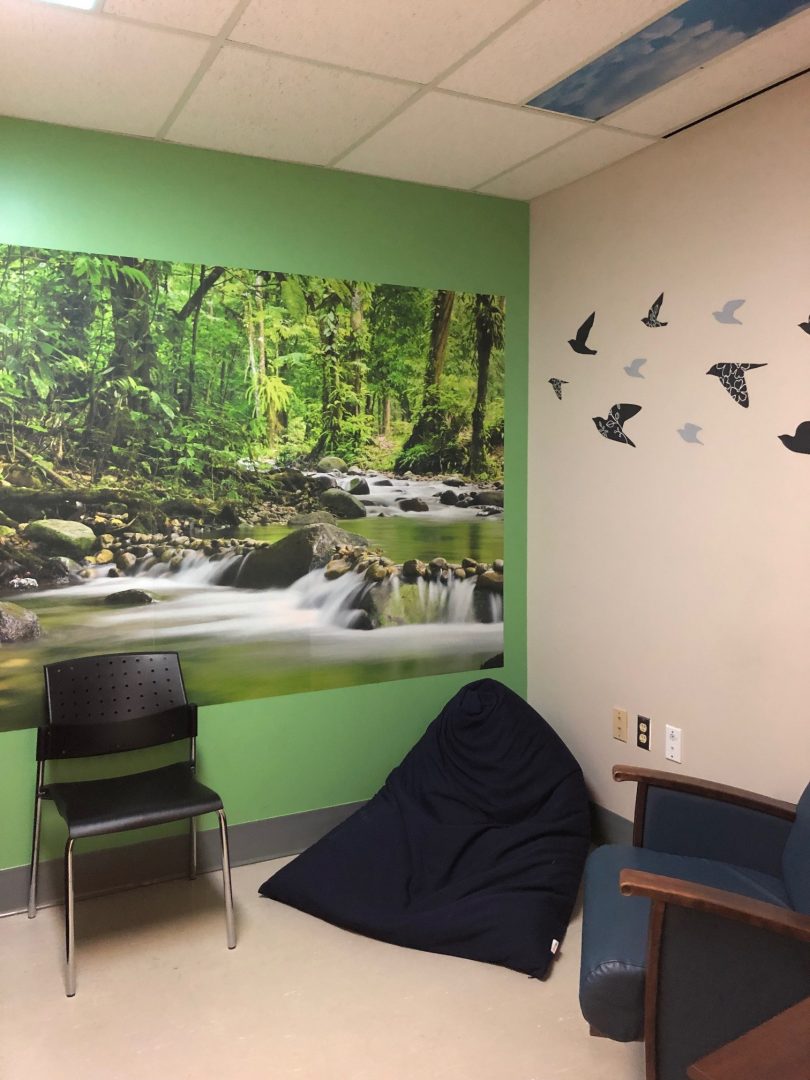We can all think of a private, soothing, quiet space that makes us feel calm, and it’s not often we think of those spaces as existing in a busy urban hospital. However, new research released last week is shining light on how sensory modulation rooms (SMRs) in acute care settings can provide a less intrusive alternative to medication or potentially counterproductive behavioral control methods such as restraint and seclusion.
A sensory modulation room, located at Alder Unit, St. Vincent’s: Langara.
SMRs are specially designed therapeutic spaces that help individuals understand how they are affected by, and respond to, external stimuli. Through gaining this knowledge, the SMR user can develop strategies to help regulate their response to future events and challenges. This is particularly important for people who may struggle with their mental health.
Study shows SMRs can decrease use of medication
PLOS ONE has recently published research from CHÉOS Scientist Dr. Skye Barbic and Blaine Bray, Program Director of Mental Health at St. Paul’s Hospital. Along with a team from UBC and Providence Health Care, the group explored how select groups of people perceive the use of SMRs in an acute inpatient psychiatric setting.
Dr. Barbic states, “Since SMRs have been introduced into psychiatric care settings, the use of seclusion, physical restraint, and medication has generally decreased, and the use of self-soothing and self-management strategies has increased.” She continues, “Despite this, no one has yet studied how health providers and service users actually feel about SMRs. This is a knowledge gap that we set out to help fill.”
SMRs provides ‘safe place’ for patients
The study took place at St. Paul’s Hospital, where there are three mental health units, each with its own SMR. Researchers found several key themes associated with SMRs. The most prevalent finding is the room helped service users feel empowered and able to practice self-management strategies, as needed. The majority of service users also felt that the SMR helped them regulate their emotions, particularly anxiety or stress. In addition, it provided an alternative management strategy to restraint, medication, and/or seclusion.
“Our results suggest that both service users and health providers in inpatient psychiatric care units view SMRs positively, as they help users establish self-control skills and focus on their recovery,” explains Dr. Barbic. “The rooms provide users with a ‘safe place’ – somewhere away from the hustle and bustle of the hospital – where they can really think about their own recovery, be mindful, and learn coping strategies that they can utilize when they leave the hospital.”







